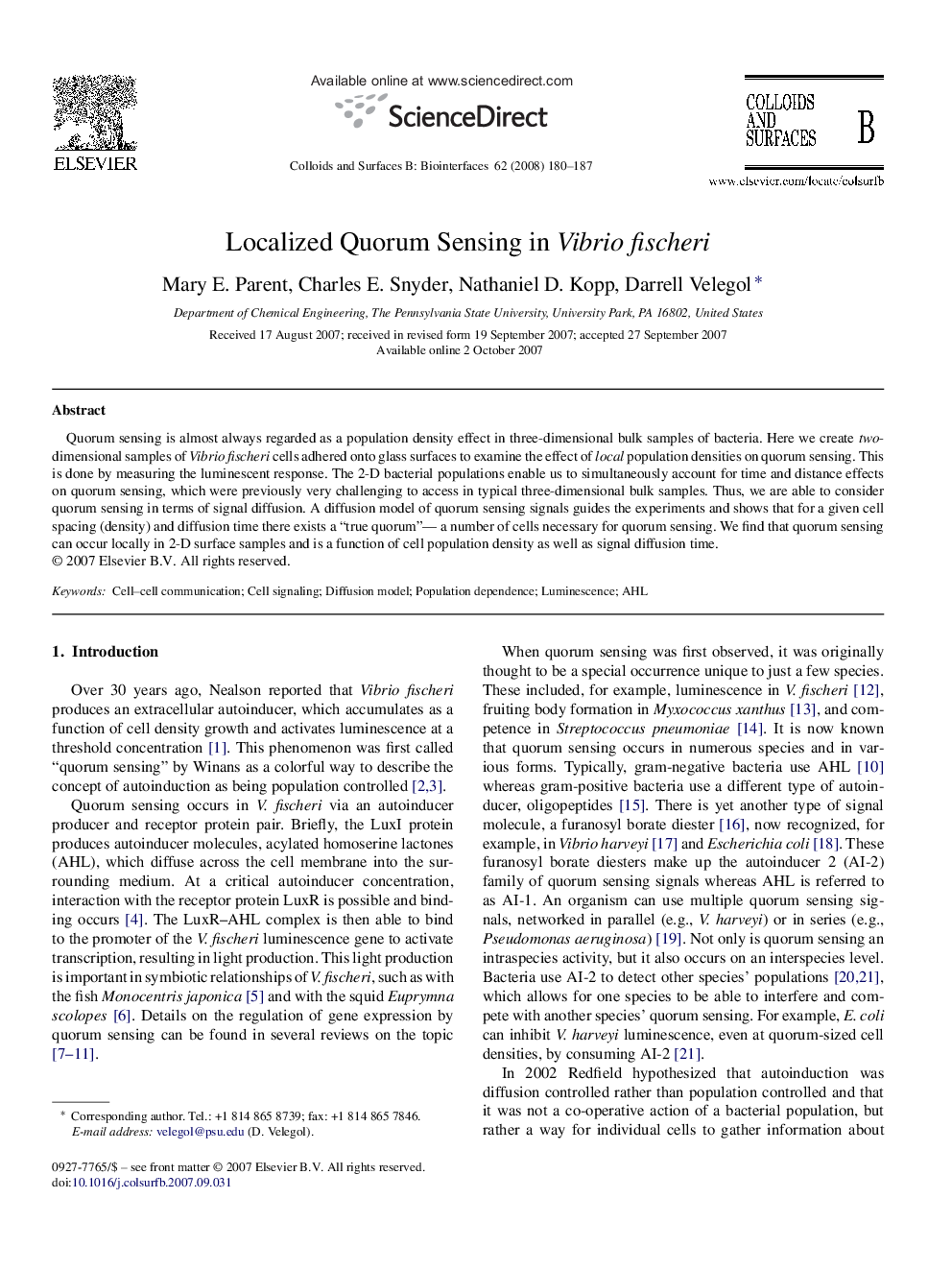| Article ID | Journal | Published Year | Pages | File Type |
|---|---|---|---|---|
| 602300 | Colloids and Surfaces B: Biointerfaces | 2008 | 8 Pages |
Abstract
Quorum sensing is almost always regarded as a population density effect in three-dimensional bulk samples of bacteria. Here we create two-dimensional samples of Vibrio fischeri cells adhered onto glass surfaces to examine the effect of local population densities on quorum sensing. This is done by measuring the luminescent response. The 2-D bacterial populations enable us to simultaneously account for time and distance effects on quorum sensing, which were previously very challenging to access in typical three-dimensional bulk samples. Thus, we are able to consider quorum sensing in terms of signal diffusion. A diffusion model of quorum sensing signals guides the experiments and shows that for a given cell spacing (density) and diffusion time there exists a “true quorum”- a number of cells necessary for quorum sensing. We find that quorum sensing can occur locally in 2-D surface samples and is a function of cell population density as well as signal diffusion time.
Related Topics
Physical Sciences and Engineering
Chemical Engineering
Colloid and Surface Chemistry
Authors
Mary E. Parent, Charles E. Snyder, Nathaniel D. Kopp, Darrell Velegol,
